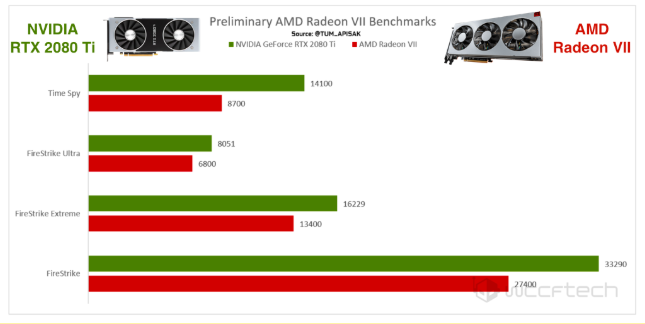Oh Dear God, It’s Vega All Over Again
February 7, 2019
When Advanced Micro Devices, Inc (AMD) announced their shiny new Radeon VII graphics processor at CES 2019, many Team Red fans were wide-eyed and hopeful. Could AMD finally challenge the monopoly held by rival NVidia in the consumer GPU market? Could consumers seeking the cutting edge of gaming performance have a choice in their components? Could anybody wipe that grin off Jensen Huang’s face? Unfortunately, as benchmark results for the new generation of AMD graphics processing began leaking out and being tested by tech review channels, the numbers were not optimistic.
Many PC enthusiasts are suffering vivid flashbacks to the release of RX Vega, AMD’s last attempt at the throne, which failed to rival the power of NVidia’s GTX 10-series 1080 Ti and ended up falling flat. Dangerous similarities between then and now are already apparent, as AMD’s poster boy is only able to trade punches with NVidia’s second-in-line RTX 2080, reflecting Vega’s comparability with the previous step-down GTX 1080. As it was then, so shall it be now, NVidia’s creme-de-la-creme going unrivaled, as shown in the above chart – Radeon VII’s numbers are not even close to the RTX 2080 Ti’s raw horsepower. And while the second-from-top hardware tier is a fine market to occupy, what AMD really needed was not a GPU that focused on performance per dollar, as the Radeon VII does. For AMD to remain competitive in the graphics market, they must eventually prove to consumers and investors alike that they truly have the technology to rival NVidia, and they won’t do that by rolling out a new generation of value cards every year or two.

